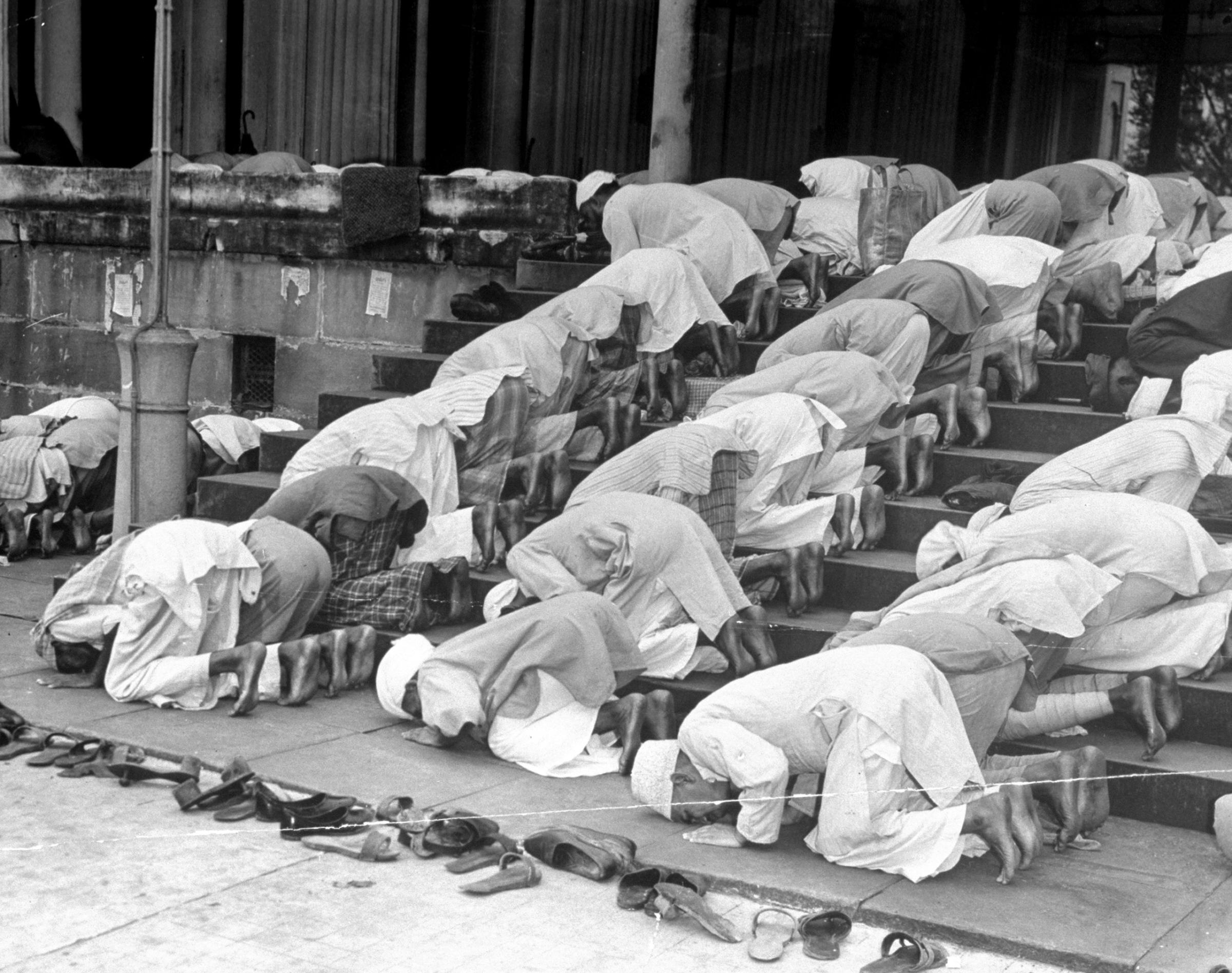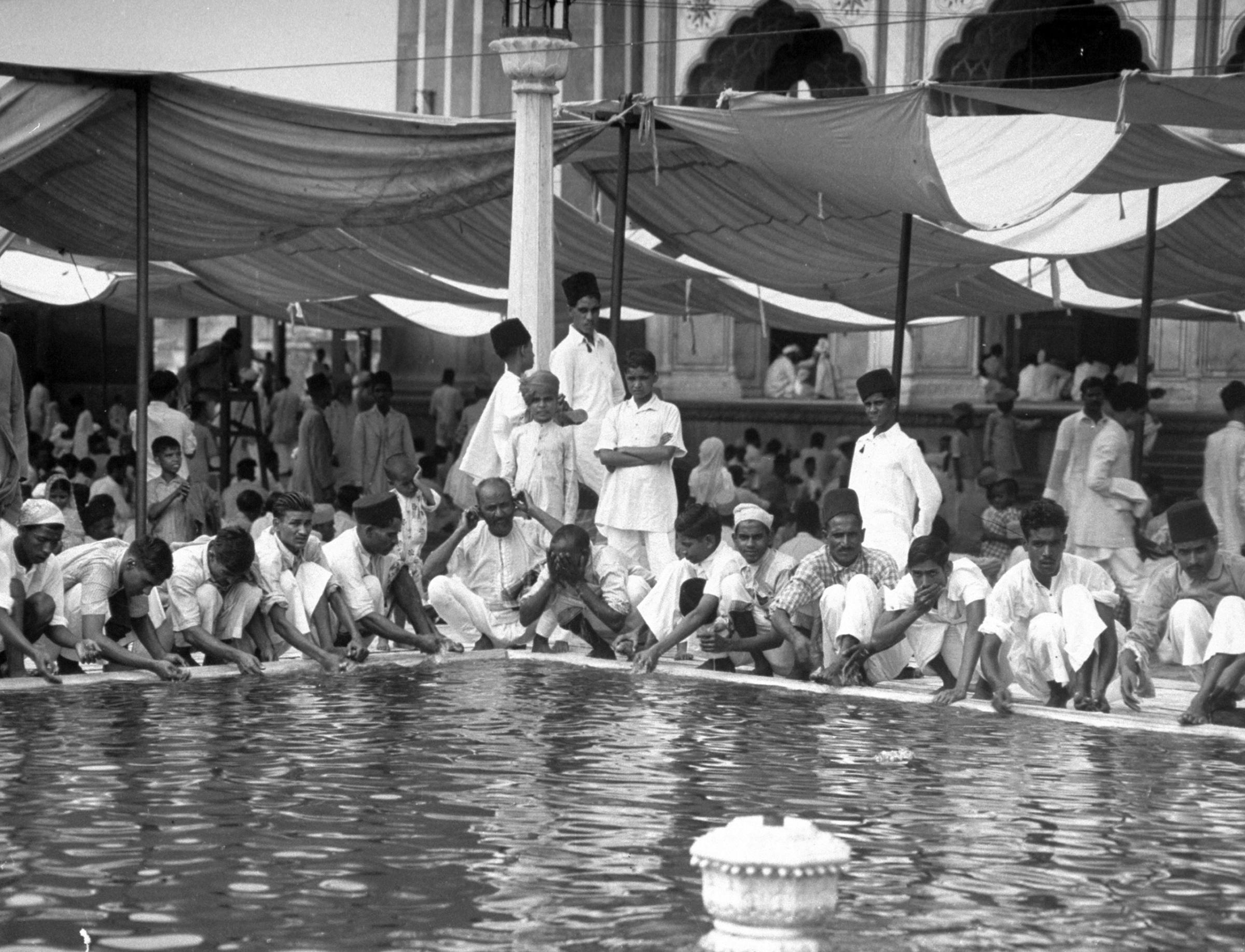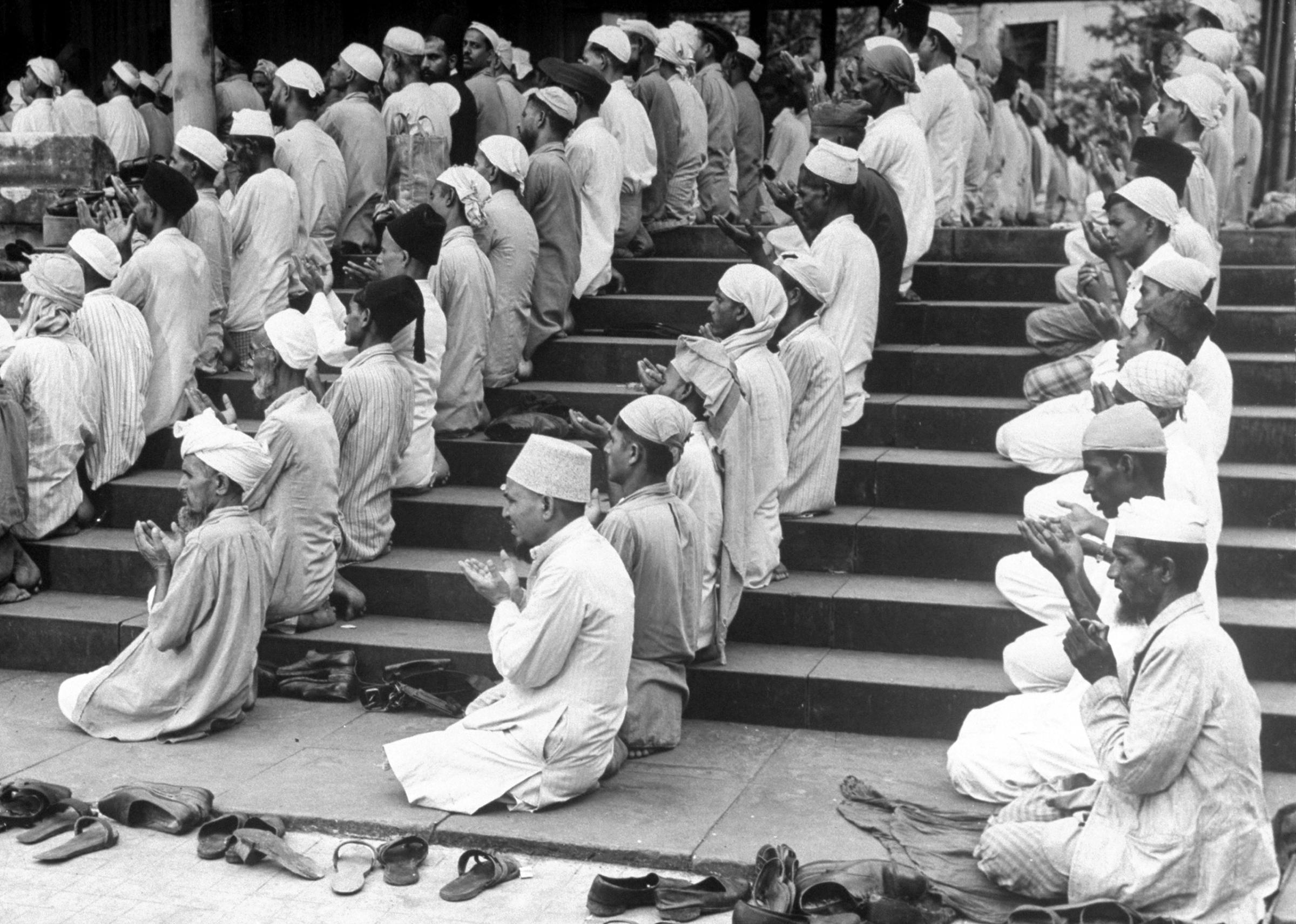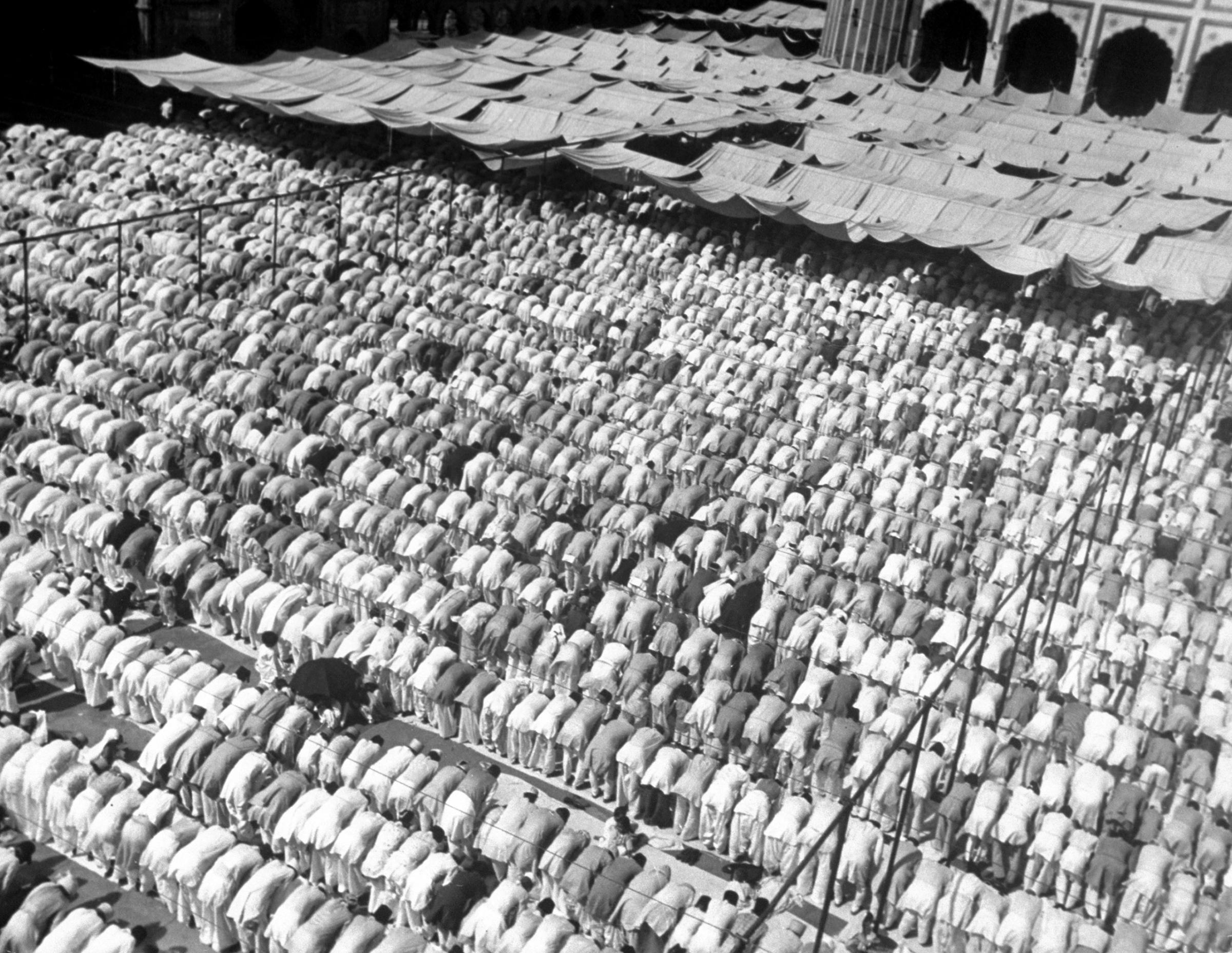
Wednesday evening marks the beginning of Ramadan, the month-long observance during which many Muslims fast daily to inspire deep reflection and commemorate the revelation of the Quran to Muhammad. That sense of reflection was captured in 1946 by LIFE photographer Margaret Bourke-White. For Bourke-White, who spent considerable time in India recording the violence surrounding the partition of India and Pakistan, it was the rare chance to document peace, as she photographed prayers on the last day of Ramadan.
Bourke-White had the unique opportunity to take photographs inside Delhi’s Jama Masjid, India’s largest mosque. In the captions, LIFE explained the basics of Muslim prayer, with which many of its readers would have been unfamiliar. These included facing in the direction of Mecca, prostrating oneself and praying five times each day.
That year’s September observance of Eid al-Fitr, the final day of Ramadan, fell one month after the event that came to be known as Direct Action Day, a bloody clash between Muslims and Hindus in Kolkata. (The city was then called Calcutta; many of LIFE’s 1946 spellings differ from today’s, as can be seen in the captions above.) While Delhi’s Muslims prayed in mosques, many of Kolkata’s took to the streets in an unusual demonstration, “probably staged,” LIFE conjectured, “for political reasons to impress Hindus of Moslem strength.”
Liz Ronk, who edited this gallery, is the Photo Editor for LIFE.com. Follow her on Twitter @lizabethronk.









More Must-Reads from TIME
- Why Biden Dropped Out
- Ukraine’s Plan to Survive Trump
- The Rise of a New Kind of Parenting Guru
- The Chaos and Commotion of the RNC in Photos
- Why We All Have a Stake in Twisters’ Success
- 8 Eating Habits That Actually Improve Your Sleep
- Welcome to the Noah Lyles Olympics
- Get Our Paris Olympics Newsletter in Your Inbox
Write to Eliza Berman at eliza.berman@time.com